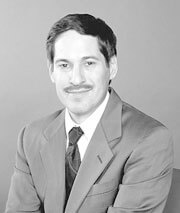New city report says between 6 and 16 percent of gay, bi men have HIV
Between six and 16 percent of New York City men who have sex with men may be infected with HIV, the virus that causes AIDS, according to a draft report prepared by the city’s health department.
“This just does not bode well for New York City,” said Terri Smith-Caronia, director of New York City policy at Housing Works, an AIDS service organization. “This means our prevention efforts have been failing.”
The report estimated that there are 214,504 gay and bisexual men in the city and another 37,854 men who have sex with men, but do not identify as gay or bisexual.
While the range for HIV prevalence, or the percentage who are HIV positive, was the same for both populations—six to 16 percent—only 31 percent of the non-gay identified men have been tested for HIV since 2000 while 67 percent of the other group had taken a test, according to estimates in the report.
Dr. Lucia V. Torian, director of the HIV epidemiology program at the health department, said the estimates for men who have sex with men would likely remain the same in the final report.
“Those are pretty well substantiated,” Torian said.
Gary English, executive director of People of Color in Crisis, a Brooklyn AIDS service group, said the data demonstrate the need for more HIV prevention efforts.
“It shows that we need more prevention and more prevention resources in the community,” he said. “We need to have real prevention that makes sense to folks.”
Gay City News obtained a copy of the report, which was distributed on December 16 to members of the New York City Commission on HIV/AIDS, an advisory board created by Mayor Michael R. Bloomberg.
The newspaper was permitted to publish a story on the report by the source who provided a copy of the report on the condition that it contact the health department to correct any errors in the draft document.
The report estimated that between one-hundredth of one percent and one percent of heterosexual women were HIV-positive and between one hundredth of one percent and 1.3 percent of heterosexual men were HIV positive. Although the numbers are small, the range of these estimates is extraordinarily wide.
Torian said that with more “parsing” of the data on HIV prevalence among heterosexuals that range might change in the final version of the report.
“The range is going to be much tighter,” she said.
That could also result in a reduction of the estimate of the total number of New Yorkers who are HIV-positive.
Thirty-three percent of the city’s heterosexual women and 31 percent of the heterosexual men have taken an HIV test since 2000, the report estimated.
The report noted that heterosexuals may not see themselves at risk of getting HIV and so they do not get tested.
“Among undiagnosed and unreported cases, the least is known about prevalence within the heterosexual population,” the report said. “The low overall proportion tested and the relative paucity of sero-surveillance and research data on heterosexuals presents a formidable challenge in generating these estimates.”
Smith-Caronia agreed that the heterosexual estimate was a flaw in the data, but she said the prevalence estimate among women was probably low. “These numbers are horrible,” she said. “I think these statistics are so incomplete or dirty that it’s difficult for me to react.”
The report estimated that there are 162,500 injecting drug users in the city and the HIV prevalence among them ranged from ten to 20 percent.
An estimated 92 percent of the 138,025 users who are “in services” have taken an HIV test since 2000 while none of the 24,375 who are “not in services” have been tested.
“In services” is defined as getting drug treatment or service “where HIV risk reduction interventions are provided and HIV testing is routine.”
The report also noted that in 2002, 26 percent of the new HIV diagnoses were in people who already met the clinical definition of AIDS. That suggests those individuals had been infected for years and were unaware of their status.
“That is the biggest chunk of the failure.” Smith-Caronia said.
The number of people in the city and nationwide who get an HIV and AIDS diagnosis simultaneously has remained stable for the past decade at roughly 25 percent of new diagnoses, according to the report.
Dr. Thomas R. Frieden, the city’s health commissioner, has repeatedly expressed alarm about these concurrent HIV-AIDS diagnoses, most recently at the December 1 event announcing the creation of the commission. Advocates and the city agreed that the report points up the need for greater efforts at prevention and HIV testing.
“New York City has a high burden of HIV and AIDS,” Torian said. “The AIDS case rates continue to decline, not fast enough, deaths continue to decline, not fast enough.”
Dennis deLeon, president of the Latino Commission on AIDS, said “It just underscores the need for more aggressive and more creative outreach for testing and connecting people who test positive to social and medical services.”


































